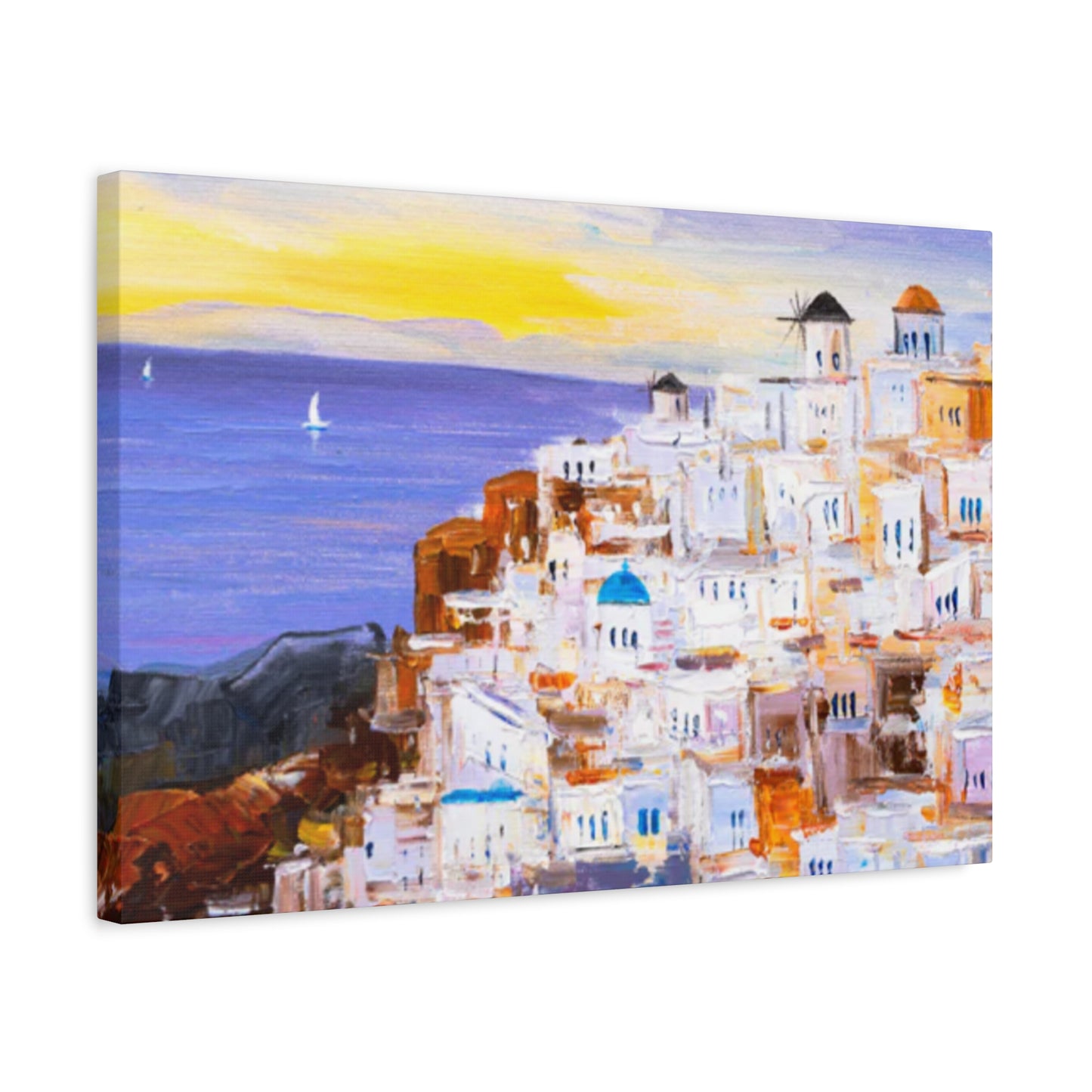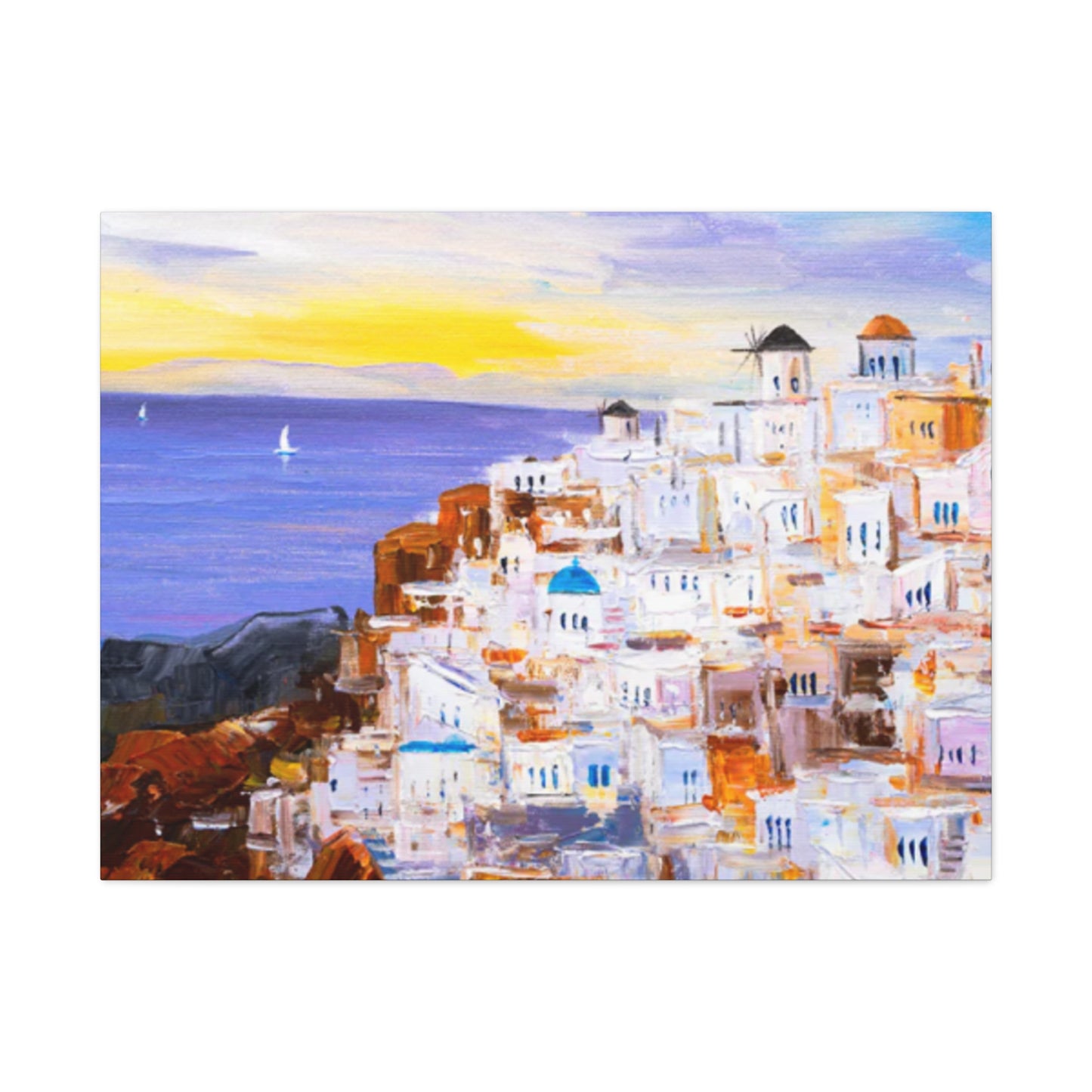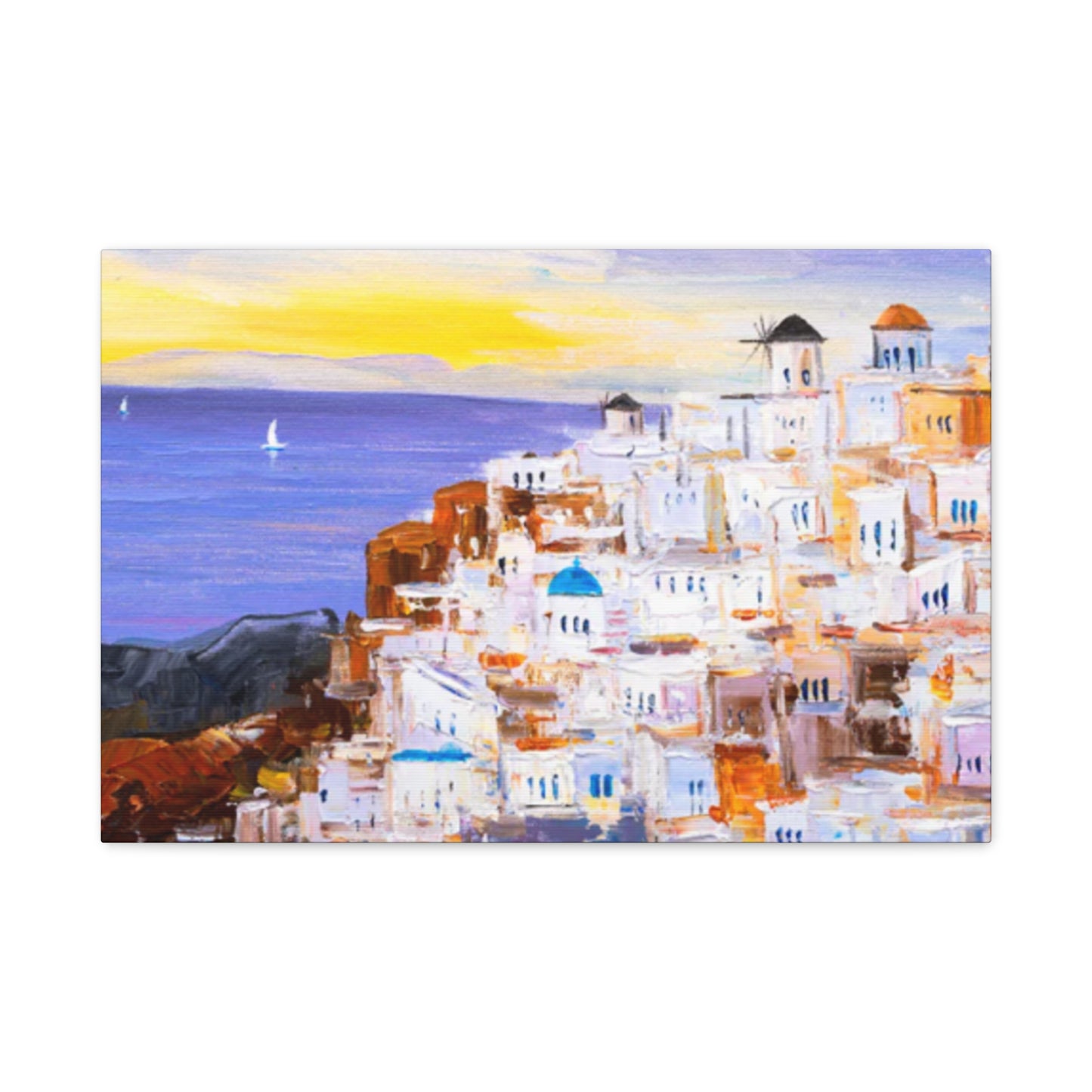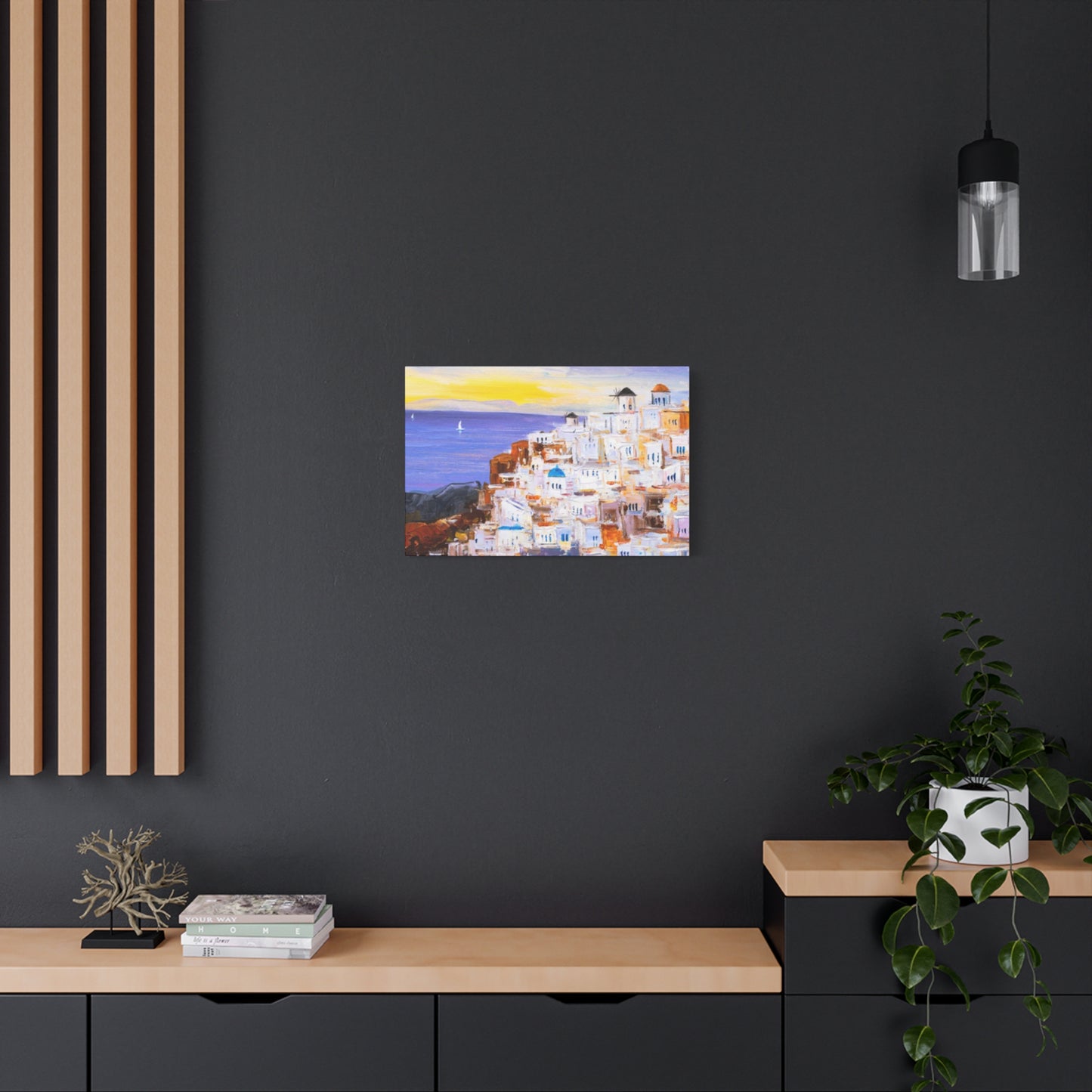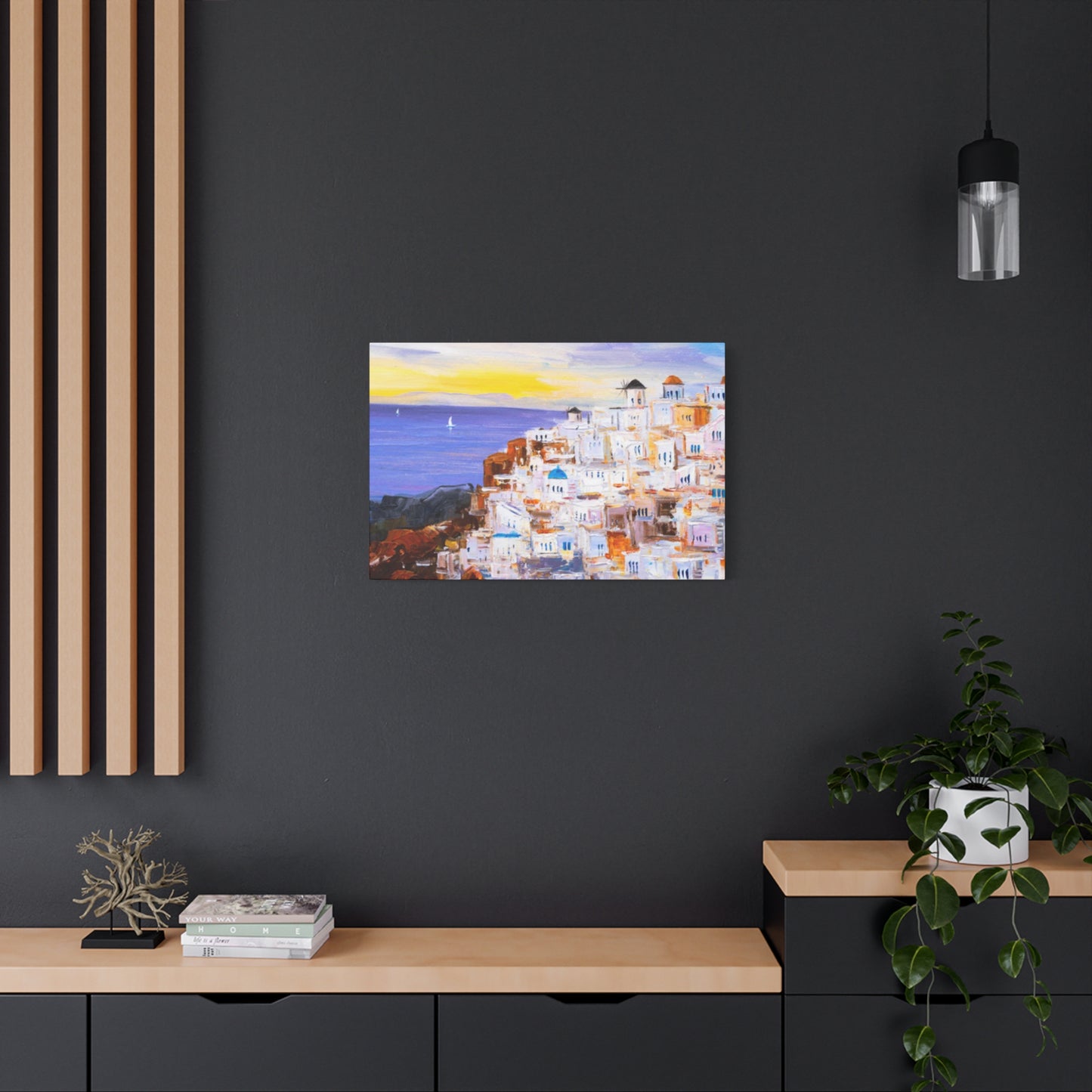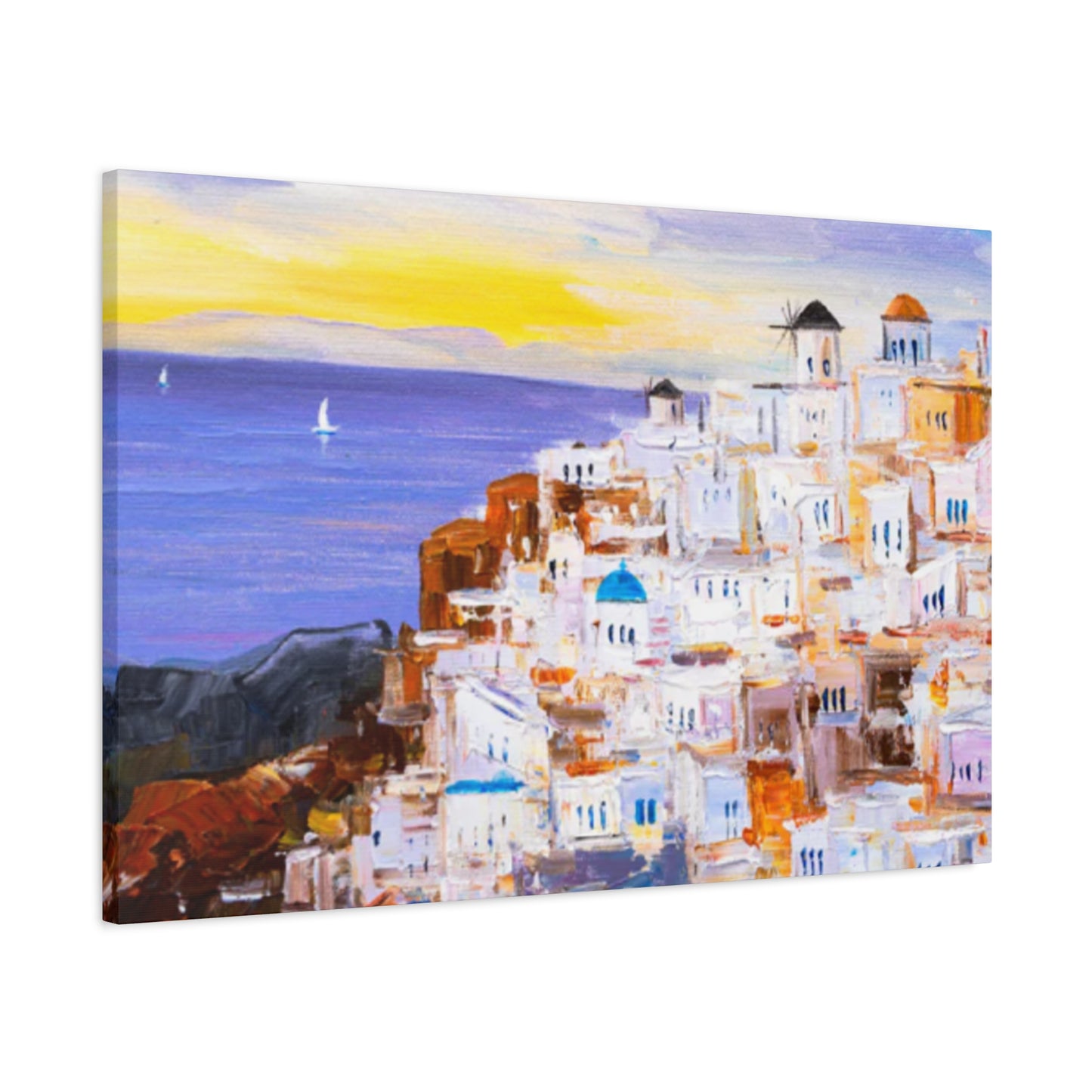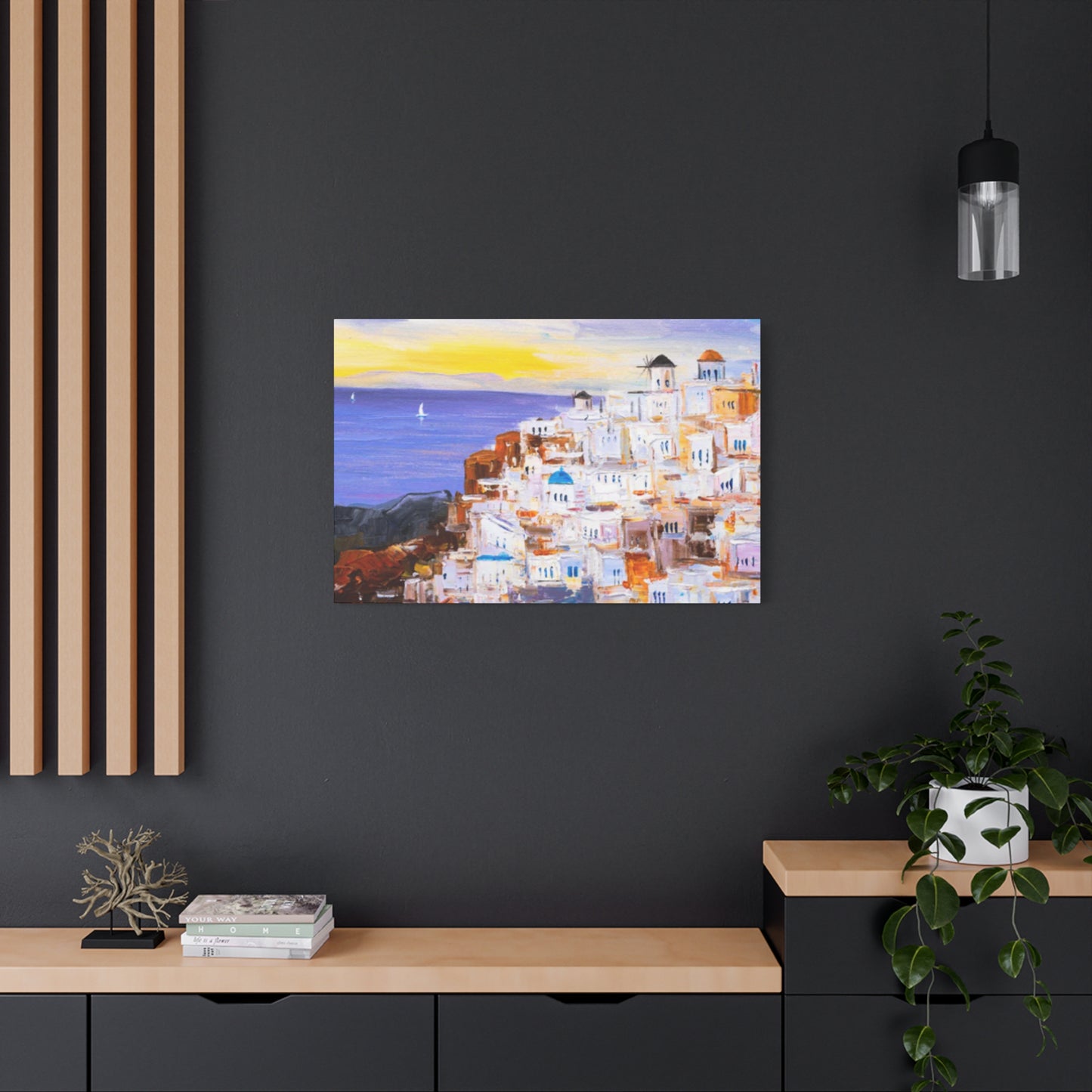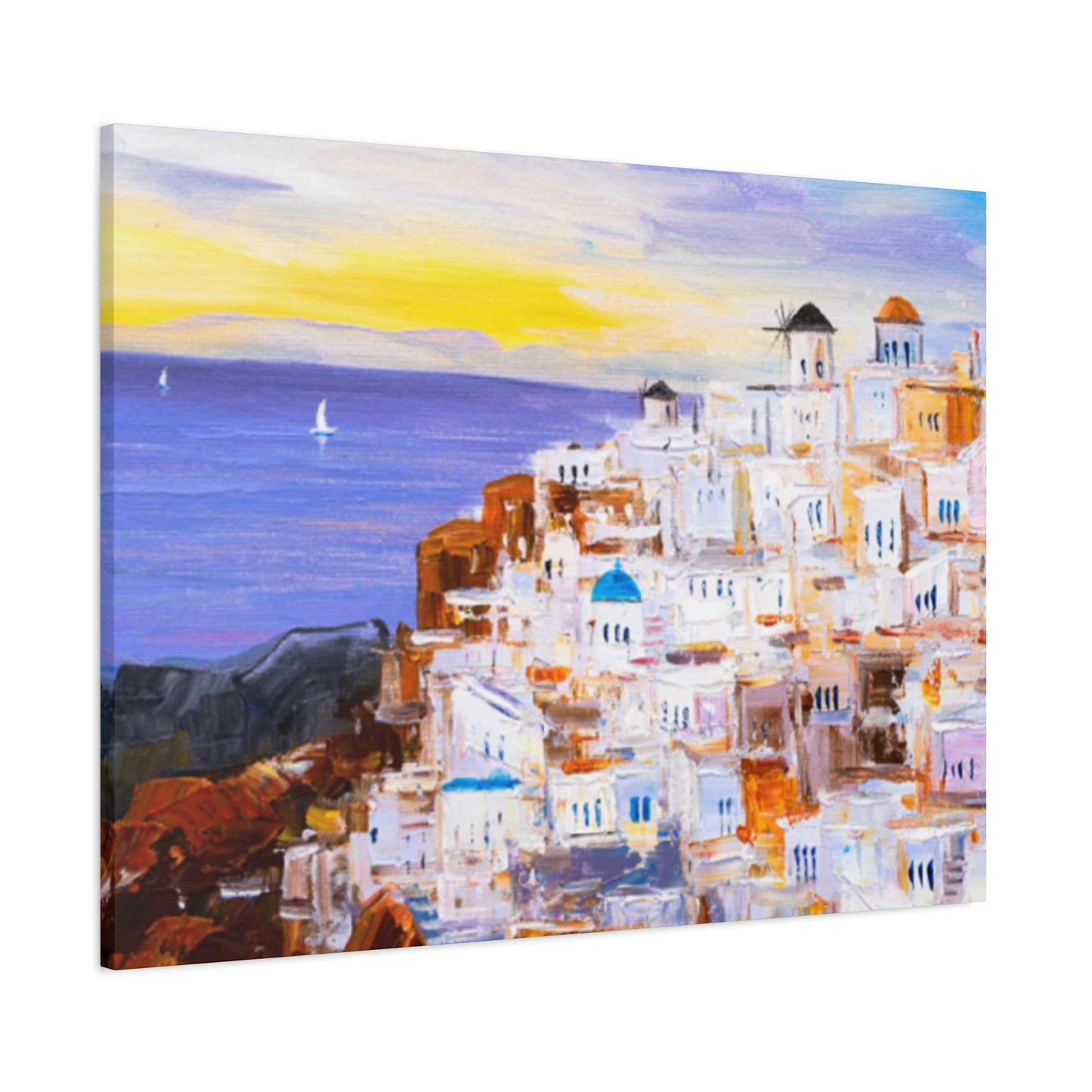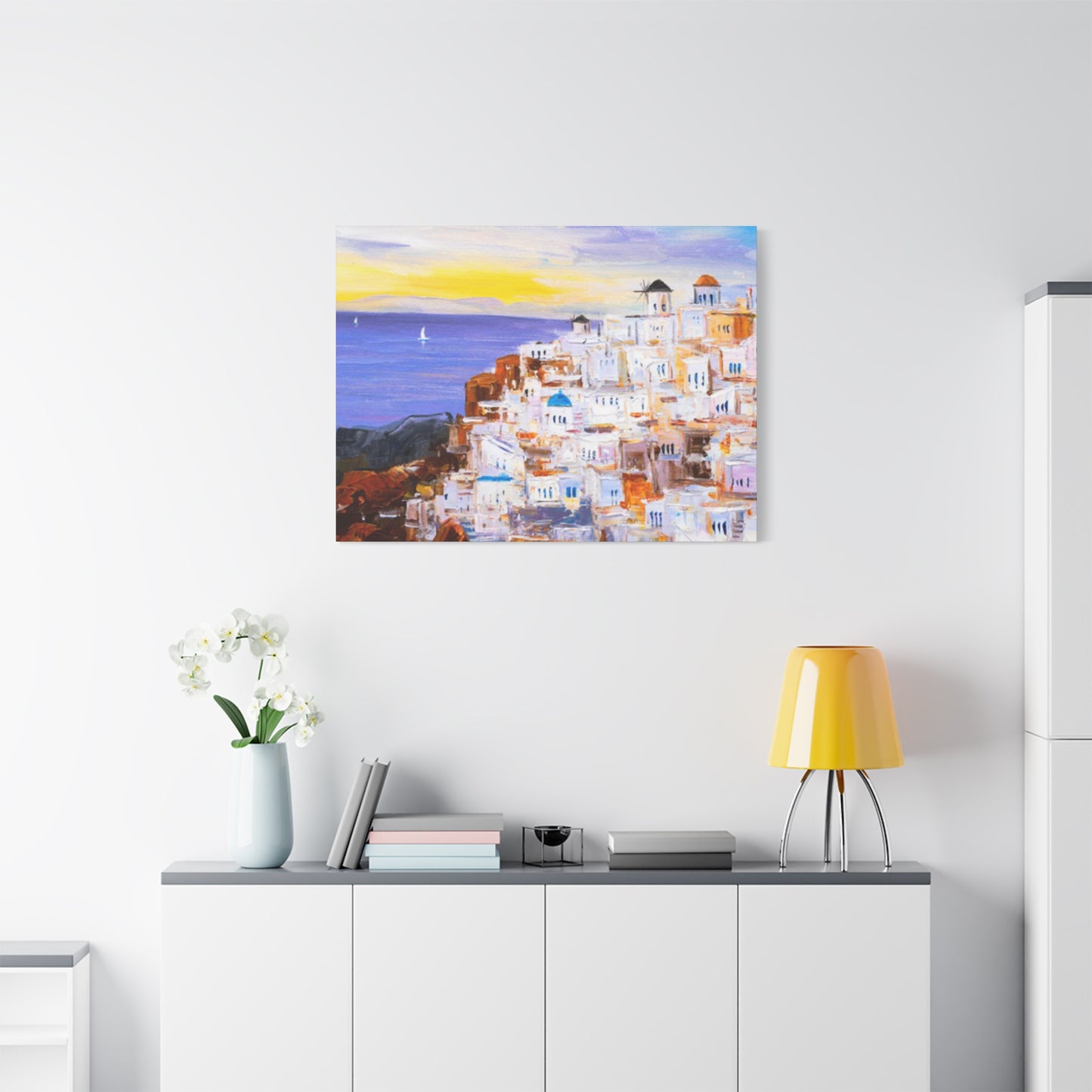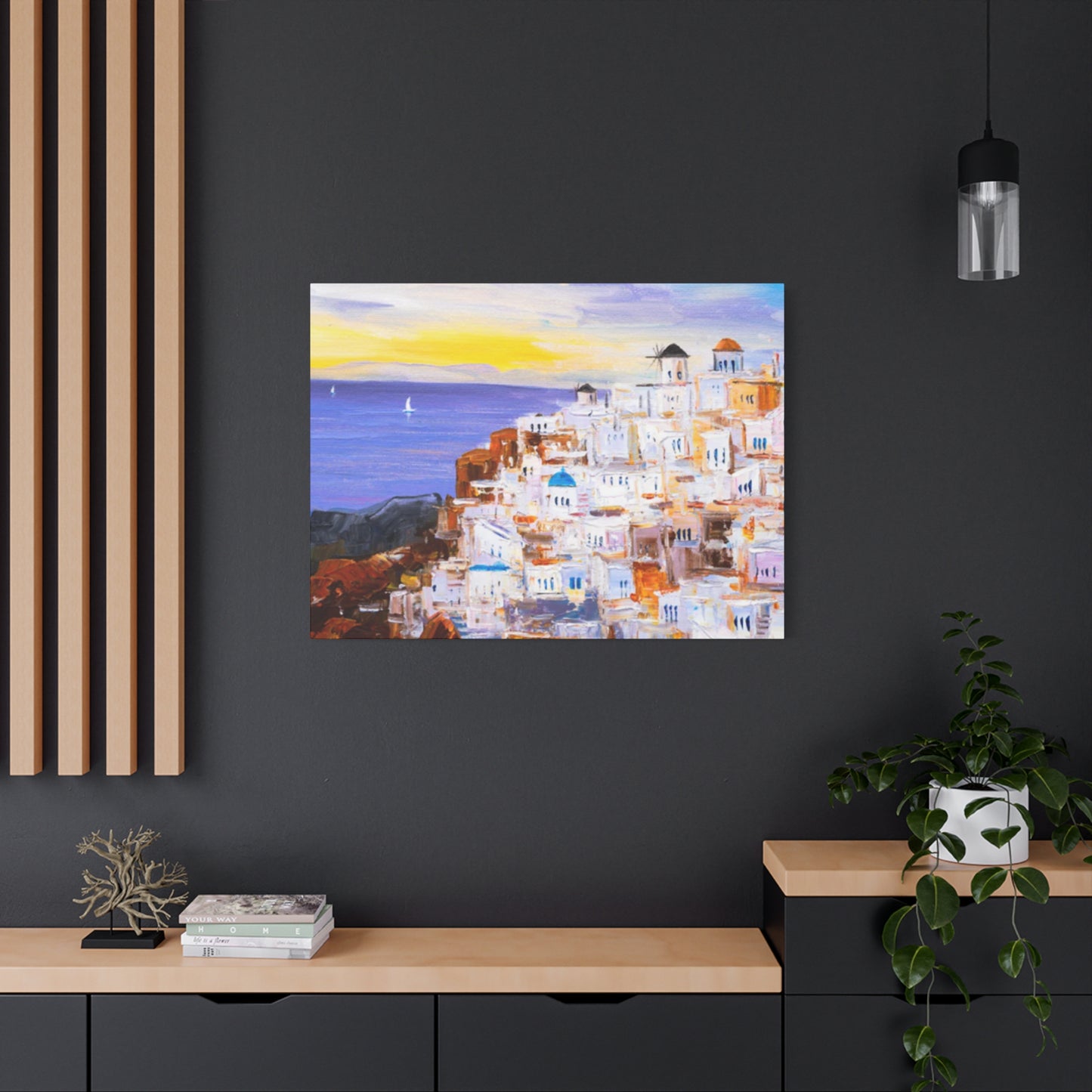Exploring the Iconic Blue and White in Greece Painting Wall Art
Greece painting wall art represents one of the most captivating and enduring forms of artistic expression that continues to mesmerize art enthusiasts and collectors worldwide. The rich cultural heritage of Greece, with its mythological narratives, breathtaking landscapes, and architectural marvels, provides an inexhaustible source of inspiration for artists who seek to capture the essence of this Mediterranean paradise. From the azure waters surrounding picturesque islands to the magnificent columns of ancient temples, Greece painting wall art encompasses a vast spectrum of subjects that can transform any living environment into a sophisticated gallery of Mediterranean charm.
The appeal of Greece painting wall art extends far beyond mere decoration, serving as a bridge between contemporary living and the timeless beauty of ancient civilization. These artistic creations offer viewers an opportunity to connect with the philosophical depth, aesthetic principles, and natural splendor that have defined Greece culture for millennia. Whether depicting the dramatic cliffs of Santorini, the windmills of Mykonos, or the classical architecture of Athens, each piece of Greece painting wall art carries within it the soul of a nation that has contributed immeasurably to world art, philosophy, and culture.
Modern homeowners and art collectors increasingly recognize the value of incorporating Greece painting wall art into their environments, not only for its visual appeal but also for its ability to create an atmosphere of tranquility, sophistication, and cultural refinement. The versatility of these artworks allows them to complement various decorating styles, from minimalist contemporary settings to more traditional Mediterranean-inspired rooms. The enduring popularity of Greece painting wall art speaks to its universal appeal and the human desire to surround ourselves with beauty that transcends temporal boundaries.
Abstract Versus Realistic Interpretations in Greece Artwork
The distinction between abstract and realistic approaches in Greece painting wall art represents one of the most fascinating aspects of contemporary Mediterranean artistic expression. Abstract interpretations of Greece themes offer artists the freedom to explore emotional and spiritual connections to the landscape, mythology, and cultural essence of Greece without being constrained by literal representation. These works often employ bold color palettes, expressive brushstrokes, and symbolic elements that capture the feeling and energy of Greece subjects rather than their precise visual appearance.
Abstract Greece painting wall art frequently draws inspiration from the emotional responses evoked by Greece landscapes and cultural experiences. Artists working in this style might use sweeping blues and whites to suggest the Aegean Sea and traditional architecture without depicting specific locations or buildings. The abstract approach allows for a more personal and interpretive relationship with Greece themes, enabling viewers to project their own experiences and emotions onto the artwork. This style particularly appeals to contemporary collectors who appreciate art that stimulates imagination and personal reflection.
Realistic Greece painting wall art, conversely, focuses on accurate representation of Greece subjects, from detailed architectural studies to precise landscape renderings. These works celebrate the technical skill of the artist and provide viewers with windows into specific Greece locations, historical moments, or cultural practices. Realistic Greece paintings often serve educational and documentary purposes alongside their aesthetic function, preserving and sharing knowledge about Greece geography, architecture, and daily life.
The choice between abstract and realistic Greece painting wall art often depends on the intended use and the personal preferences of the collector. Realistic works tend to work well in traditional settings where historical accuracy and recognizable imagery are valued, while abstract pieces often complement more contemporary environments where artistic expression and emotional resonance take precedence over literal representation. Many collectors choose to combine both styles, creating dynamic collections that explore the full range of artistic approaches to Greece themes.
Contemporary artists working with Greece subjects often find themselves drawn to hybrid approaches that combine realistic elements with abstract techniques. These mixed-media works might feature recognizable Greece architectural elements rendered in loose, expressive styles, or realistic landscapes with abstract color treatments. This blending of approaches reflects the ongoing evolution of Greece painting wall art and its adaptation to contemporary aesthetic sensibilities.
The market for both abstract and realistic Greece painting wall art continues to grow as collectors recognize the unique contributions each style makes to contemporary art. Abstract works offer timeless appeal that transcends specific cultural knowledge, while realistic pieces provide cultural education and historical documentation. Both approaches contribute to the rich tapestry of contemporary Greece painting wall art and ensure its continued relevance in the modern art world.
Capturing the Essence of Santorini and Mykonos Through Paint
The Greece islands of Santorini and Mykonos have become iconic subjects in contemporary Greece painting wall art, representing the quintessential Mediterranean aesthetic that captivates artists and collectors worldwide. These islands offer artists an extraordinary palette of colors, textures, and architectural forms that translate beautifully into painted media. Santorini, with its distinctive blue-domed churches, whitewashed buildings cascading down volcanic cliffs, and spectacular sunset views, provides artists with some of the most photographed and painted landscapes in the world.
Artists approaching Santorini as a subject in Greece painting wall art often focus on the dramatic contrast between the deep blue Aegean Sea and the pristine white architecture that defines the island's visual identity. The volcanic landscape adds another dimension of complexity, with its dark, rocky surfaces providing a striking foundation for the luminous buildings above. Skilled artists capture not only the visual elements of Santorini but also the atmospheric qualities that make the island so enchanting, including the soft, golden light of sunset and the crisp clarity of Mediterranean air.
Mykonos presents different but equally compelling subject matter for Greece painting wall art. Known for its vibrant nightlife, picturesque windmills, and charming harbor town, Mykonos offers artists opportunities to explore themes of movement, celebration, and maritime culture. The island's famous windmills, perched on hills overlooking the sea, have become symbols of Greece island life and appear frequently in contemporary Greece painting wall art. These structures, with their simple geometric forms and weathered surfaces, provide excellent subjects for both realistic and abstract artistic interpretations.
The techniques employed in painting these Greece islands vary considerably among artists, with some preferring loose, impressionistic approaches that capture the fleeting effects of light and atmosphere, while others favor more detailed, realistic renderings that document specific architectural features and landscape elements. Watercolor techniques often work particularly well for island subjects, as the medium's transparency and fluidity naturally complement the luminous quality of Mediterranean light and the reflective surfaces of water.
Contemporary artists creating Greece painting wall art of these islands often draw inspiration from the long tradition of travel painting and plein air work, where artists paint directly from observation in natural settings. This approach helps capture the authentic colors, lighting conditions, and atmospheric effects that make these islands so visually compelling. Many successful island paintings combine direct observation with studio refinement, allowing artists to preserve the spontaneous energy of on-location work while achieving the technical precision that collectors value.
The commercial appeal of Santorini and Mykonos subjects in Greece painting wall art reflects the islands' status as premier tourist destinations and symbols of Mediterranean lifestyle. These paintings allow collectors to bring the beauty and atmosphere of these exotic locations into their homes, creating focal points that evoke memories of travel or inspire dreams of future visits. The enduring popularity of these subjects ensures a continued market for high-quality island paintings and encourages artists to explore new approaches to these classic themes.
Enhancing Coastal Environments with Greece Artistic Elements
The integration of Greece painting wall art into coastal decorating schemes represents a natural and harmonious design approach that celebrates the Mediterranean aesthetic while enhancing the natural beauty of waterfront environments. Coastal homes and commercial establishments benefit tremendously from the incorporation of Greece artistic elements, which complement and amplify the existing connections to maritime culture and seaside living. The colors, themes, and artistic techniques characteristic of Greece painting wall art naturally align with coastal design principles, creating cohesive and visually appealing environments.
Greece painting wall art brings authentic Mediterranean character to coastal settings through its characteristic color palette of blues, whites, and earth tones that mirror the natural colors found in seaside environments. The azure blues of the Aegean Sea depicted in Greece paintings harmonize beautifully with ocean views, while the pristine whites of Greece architecture complement the clean lines and bright atmospheres typical of coastal design. These color relationships create visual continuity between artwork and environment, enhancing the overall aesthetic impact of both elements.
The subject matter typical of Greece painting wall art also resonates strongly with coastal themes and lifestyle preferences. Maritime subjects such as fishing boats, harbors, and seascapes translate directly into coastal decorating contexts, while architectural subjects like Greece temples and island villages provide cultural depth and historical context that enriches the coastal living experience. The combination of natural and architectural elements in Greece painting wall art offers decorating flexibility that accommodates various coastal design approaches, from casual beach house aesthetics to more sophisticated Mediterranean villa styles.
Texture plays a crucial role in the successful integration of Greece painting wall art into coastal environments. Many Greece paintings feature visible brushwork and textural elements that complement the natural textures found in coastal settings, such as weathered wood, natural stone, and woven fabrics. These textural relationships create visual harmony and tactile interest that enhance the overall sensory experience of coastal living environments.
The scale and placement of Greece painting wall art in coastal settings require careful consideration to achieve optimal visual impact. Large-scale pieces work well as focal points in open living areas with high ceilings and expansive views, while smaller works can be grouped to create gallery walls that add visual interest without competing with natural views. The positioning of artwork relative to natural light sources becomes particularly important in coastal settings, where the quality and intensity of light can vary dramatically throughout the day.
Professional decorators working with coastal clients often recommend Greece painting wall art as a way to establish cultural themes and create conversation focal points that reflect the homeowners' travel experiences and aesthetic preferences. The storytelling potential of Greece artwork adds depth and personality to coastal environments, transforming them from generic seaside settings into personalized expressions of cultural appreciation and artistic taste. This approach to coastal decorating creates environments that are both beautiful and meaningful, enhancing the daily living experience for residents and guests alike.
Discovering Sources for Authentic Greece Art Reproductions
The quest for authentic Greece painting wall art requires knowledge of reliable sources, reputable dealers, and quality indicators that distinguish genuine artistic works from mass-produced decorative items. Serious collectors and casual buyers alike benefit from understanding the various channels through which authentic Greece art reproductions and original works become available, as well as the criteria for evaluating quality and authenticity in this specialized market segment.
Gallery representations of Greece artists provide one of the most reliable sources for authentic Greece painting wall art, as established galleries typically maintain professional relationships with artists and ensure proper documentation and provenance for the works they sell. These relationships often extend to exclusive representation agreements that guarantee authenticity and provide collectors with direct access to the artists' latest works. Gallery environments also offer opportunities for collectors to view works in person, assess quality firsthand, and receive expert guidance about the artists' techniques, backgrounds, and market positioning.
Art fairs and cultural festivals focusing on Mediterranean or Greece themes provide excellent opportunities to discover authentic Greece painting wall art while connecting directly with artists and their representatives. These events often feature emerging artists alongside established names, offering collectors chances to acquire works at various price points while supporting the artistic community. The personal interactions possible at art fairs enable collectors to learn about the artists' inspirations, techniques, and cultural connections, adding depth and meaning to their acquisitions.
Online marketplaces specializing in fine art have revolutionized access to authentic Greece painting wall art, but they also require increased vigilance regarding authenticity and quality assessment. Reputable online galleries provide detailed provenance information, high-resolution images, and comprehensive artist biographies that help collectors make informed decisions. However, the inability to physically examine works before purchase necessitates careful research into seller reputations, return policies, and authentication procedures.
Artist studios and workshops in Greece itself offer unique opportunities for collectors to acquire authentic works while experiencing the cultural context that inspires the art. Many Greece artists welcome visitors to their studios, providing insights into their creative processes and allowing collectors to commission custom works or select from current inventory. These direct relationships often result in meaningful collecting experiences and ongoing connections with the artistic community.
Museum gift shops and cultural institutions sometimes offer high-quality reproductions of Greece painting wall art from their collections, providing accessible options for collectors who appreciate museum-quality printing and documentation. While these are reproductions rather than original works, they often represent the best available examples of historical Greece art and provide educational value alongside aesthetic appeal.
The evaluation of authenticity in Greece painting wall art requires attention to several key factors, including signature verification, provenance documentation, technical execution quality, and consistency with the artist's known body of work. Collectors should request certificates of authenticity, detailed photographs showing brush techniques and surface textures, and comprehensive information about the work's creation and exhibition history. Professional appraisal services can provide additional verification for significant purchases, ensuring that collectors receive genuine value for their investments.
The Significance of Light in Mediterranean Artistic Expression
Light serves as perhaps the most crucial element in Greece painting wall art, defining not only the visual appearance of subjects but also the emotional and spiritual qualities that make these works so compelling to viewers. The unique characteristics of Mediterranean light, with its clarity, intensity, and warm color temperature, have inspired artists for centuries and continue to influence contemporary approaches to Greece subjects. Understanding the role of light in Greece painting wall art enhances appreciation for these works and guides collectors in their selection and display decisions.
The quality of natural light in Greece differs markedly from that found in northern climates, exhibiting greater intensity, clarity, and color saturation that profoundly influences how subjects appear to the eye and how they should be rendered in paint. Greece artists working en plein air must adapt their techniques to capture these distinctive lighting conditions, often employing brighter color palettes and more pronounced value contrasts than would be appropriate for subjects in different geographical contexts. This adaptation to local lighting conditions becomes part of the authentic character of Greece painting wall art and distinguishes it from works created in other cultural contexts.
The directional qualities of Mediterranean light also play crucial roles in defining the three-dimensional forms and spatial relationships depicted in Greece painting wall art. The strong, clear sunlight common in Greece creates sharp shadow patterns that help define architectural forms, landscape features, and figure modeling. Artists skilled in working with these lighting conditions learn to use shadow patterns as compositional elements that add visual interest and spatial depth to their works. The interplay between illuminated and shadowed areas becomes a fundamental aspect of Greece artistic expression.
Color temperature variations in Mediterranean light throughout the day provide Greece painting wall art with opportunities to explore different moods and atmospheric effects within similar subjects. The warm, golden light of early morning and late afternoon creates different emotional responses than the cooler, more neutral light of midday, allowing artists to emphasize different aspects of their subjects depending on the desired expressive effect. These temporal variations in light quality add richness and complexity to Greece painting wall art and provide collectors with diverse options for creating specific moods in their environments.
The reflection and refraction of light from water surfaces adds another dimension of complexity to Greece painting wall art, particularly in coastal and island subjects. The interaction between sunlight and water creates constantly changing patterns of reflected light that challenge artists to capture both the physical appearance of these effects and their emotional impact. Successful rendering of reflected light often distinguishes masterful Greece paintings from more pedestrian works and provides collectors with indicators of artistic skill and sensitivity.
Indoor lighting considerations become crucial when displaying Greece painting wall art, as the original lighting conditions that inspired the work may differ significantly from typical interior environments. Collectors should consider both the quantity and quality of available light when selecting display locations, ensuring that the lighting enhances rather than distorts the color relationships and tonal values that make the artwork effective. Professional lighting design for art display can significantly improve the viewing experience and protect valuable works from damage caused by inappropriate illumination.
The symbolic and metaphorical uses of light in Greece painting wall art extend beyond mere technical considerations to encompass themes of enlightenment, spiritual transformation, and cultural identity. Light often serves as a metaphor for knowledge, divine presence, or cultural vitality in Greece art, adding layers of meaning that enrich the viewing experience. Collectors who understand these symbolic dimensions can appreciate Greece painting wall art on multiple levels and select works that resonate with their personal values and aesthetic preferences.
Large Format Greece Canvas Works and Their Impact
Large canvas paintings featuring Greece subjects create powerful focal points that can transform entire rooms and establish strong cultural themes in residential and commercial environments. The impact of scale in Greece painting wall art cannot be overstated, as larger works provide opportunities for artists to develop complex compositions, elaborate detail work, and immersive viewing experiences that smaller formats cannot achieve. The decision to work on large canvases also reflects the artist's confidence in their subject matter and technical abilities, often resulting in more ambitious and successful artistic statements.
The compositional advantages of large format Greece painting wall art allow artists to include multiple elements and develop complex spatial relationships that create rich, engaging viewing experiences. A large canvas depicting a Greece island scene might include detailed architectural elements in the foreground, expansive landscape vistas in the middle ground, and atmospheric sky effects in the background, creating a sense of depth and immersion that draws viewers into the painted world. These compositional opportunities enable artists to create works that function as windows into Greece culture and landscape rather than simple decorative objects.
The technical challenges of working on large canvases require advanced artistic skills and substantial commitments of time and resources, factors that often distinguish professional artists from amateur practitioners. Large format works demand consistent quality across the entire surface, sophisticated color relationships that remain harmonious at various viewing distances, and physical stamina to execute complex compositions. These requirements often result in higher quality artwork that justifies premium pricing and attracts serious collectors who appreciate technical excellence.
Display considerations for large format Greece painting wall art require careful planning to ensure optimal viewing conditions and aesthetic integration with existing architectural elements. Successful installation often depends on ceiling height, wall dimensions, furniture placement, and lighting design that complement rather than compete with the artwork. Large paintings need adequate viewing distances to be appreciated properly, making them most suitable for spacious environments where viewers can step back to appreciate the overall composition while also approaching closely to examine details.
The psychological impact of large format Greece painting wall art extends beyond mere visual appeal to encompass emotional and cultural responses that smaller works cannot achieve. Large paintings create immersive environments that can transport viewers psychologically to Greece locations, evoking memories of travel experiences or inspiring desires to visit these destinations. This emotional engagement makes large format works particularly valuable for hospitality environments, where creating memorable experiences for guests becomes a business priority.
Storage and transportation challenges associated with large format Greece painting wall art require specialized handling procedures and equipment that affect both artists and collectors. These practical considerations influence pricing, availability, and market dynamics for large works, often making them more exclusive and valuable than smaller alternatives. Collectors investing in large format pieces should consider long-term storage requirements, insurance needs, and potential resale logistics that differ significantly from those associated with smaller artworks.
The investment potential of large format Greece painting wall art often exceeds that of smaller works by the same artists, reflecting both the increased material and labor costs involved in their creation and their greater impact in exhibition and display contexts. Large works often become signature pieces in artists' portfolios and may receive greater attention from galleries, collectors, and art critics. This increased visibility can contribute to enhanced market recognition and value appreciation over time, making large format works attractive options for collectors interested in both aesthetic and financial returns.
Architectural Elements in Painted Mediterranean Scenes
Greece architecture provides some of the most recognizable and compelling subject matter for contemporary wall art, combining historical significance, aesthetic appeal, and symbolic meaning in ways that resonate with diverse audiences. The architectural elements characteristic of Greece design, including classical columns, pediments, and proportional systems, offer artists opportunities to explore themes of permanence, beauty, and cultural achievement while creating visually striking compositions that work well in various display contexts.
The classical orders of Greece architecture, including Doric, Ionic, and Corinthian styles, provide artistic subjects that combine geometric precision with organic decorative elements, creating visual interest that appeals to viewers with various aesthetic preferences. Artists working with these architectural subjects can emphasize either the mathematical precision of classical proportions or the decorative richness of carved details, depending on their artistic goals and target audiences. The versatility of architectural subjects makes them particularly suitable for both realistic and interpretive artistic approaches.
Contemporary Greece architecture, including the distinctive whitewashed buildings of island communities, offers different but equally compelling subject matter for painting wall art. These more recent architectural forms, while less historically significant than classical examples, provide connections to living Greece culture and contemporary Mediterranean lifestyle themes that many collectors find appealing. The simple geometric forms and pristine color schemes of island architecture translate particularly well into painted media and complement modern decorating approaches.
The integration of architectural elements with landscape and atmospheric effects creates opportunities for artists to develop complex compositions that combine human achievement with natural beauty. Paintings that show Greece temples or churches within their landscape contexts often achieve greater emotional impact than those focusing solely on architectural forms, as they demonstrate the relationship between human culture and the natural environment that continues to define Greece identity.
The technical challenges of rendering architectural subjects accurately require strong foundational skills in perspective, proportion, and detail work that distinguish professional artists from casual practitioners. Successful architectural paintings demonstrate the artist's understanding of structural principles, material properties, and decorative traditions that contribute to authentic representation. These technical requirements often result in higher quality artwork that appeals to sophisticated collectors and justifies premium pricing.
The symbolic significance of Greece architectural elements in painted wall art extends beyond mere documentation to encompass themes of democracy, philosophy, and Western cultural heritage that resonate with educated audiences. Paintings featuring classical Greece architecture often evoke associations with intellectual achievement, political idealism, and artistic excellence that add depth and meaning to their decorative function. This symbolic richness makes architectural subjects particularly suitable for educational, governmental, and professional environments where cultural themes support organizational missions.
The market demand for Greece architectural subjects in painting wall art reflects both tourist interest in Greece destinations and broader cultural appreciation for classical design principles that continue to influence contemporary architecture and decorating. Collectors often seek architectural subjects as ways to bring cultural sophistication and historical awareness into their environments, creating focal points that stimulate conversation and demonstrate aesthetic education. This sustained market interest ensures continued opportunities for artists working with architectural themes and supports the commercial viability of Greece painting wall art as an artistic category.
The Emotional Resonance of Greece Landscape Art
Greece landscape paintings possess a unique ability to evoke powerful emotional responses from viewers, combining natural beauty with cultural associations that transcend mere visual appeal. The landscapes of Greece, with their distinctive geological formations, vegetation patterns, and atmospheric conditions, provide artists with subject matter that naturally lends itself to emotional expression and psychological engagement. The success of Greece landscape wall art often depends on the artist's ability to capture not only the physical appearance of these environments but also their emotional and spiritual qualities.
The Mediterranean climate and geography create landscape conditions that naturally evoke feelings of tranquility, warmth, and timeless beauty that many viewers find deeply appealing. The soft, rolling hills covered with olive groves, the dramatic coastlines where mountains meet the sea, and the clear, brilliant skies characteristic of Greece landscapes all contribute to aesthetic experiences that promote relaxation and contemplation. Artists working with these subjects often emphasize these calming qualities, creating works that function as visual retreats from the stresses of contemporary life.
The historical associations embedded in Greece landscapes add layers of emotional significance that distinguish these works from generic landscape paintings. Viewers encountering Greece landscape wall art often experience connections to classical civilization, philosophical traditions, and artistic achievements that enrich the aesthetic experience with intellectual and cultural content. These historical dimensions make Greece landscapes particularly appealing to educated collectors who appreciate art that engages both emotional and intellectual responses.
The color palettes characteristic of Greece landscapes, dominated by warm earth tones, brilliant blues, and silvery greens, naturally evoke positive emotional responses and complement a wide range of decorating schemes. These color relationships create harmonious environments that promote feelings of well-being and aesthetic satisfaction. The natural color harmony found in Greece landscapes eliminates much of the guesswork involved in selecting artwork that will integrate successfully with existing decorating schemes.
The scale and grandeur of many Greece landscape subjects, from mountain ranges to expansive seascapes, create opportunities for artists to develop compositions that inspire feelings of awe and wonder in viewers. These sublime qualities, long recognized as important aesthetic categories, contribute to the emotional impact of Greece landscape wall art and help explain their enduring appeal to collectors seeking meaningful artistic experiences. The combination of natural grandeur with cultural significance creates uniquely powerful aesthetic experiences.
The seasonal variations in Greece landscapes provide artists with opportunities to explore different emotional themes within similar geographical subjects. Spring landscapes with wildflower blooms evoke feelings of renewal and optimism, while autumn scenes with golden light and harvested fields suggest themes of fulfillment and abundance. These seasonal variations allow collectors to select works that align with their emotional preferences or to create collections that explore the full range of emotional possibilities within Greece landscape themes.
The therapeutic potential of Greece landscape wall art reflects broader research into the psychological benefits of exposure to natural imagery, combined with the specific cultural and aesthetic qualities that make Greece subjects particularly effective in promoting positive emotional states. Many collectors report that Greece landscape paintings provide daily sources of inspiration, relaxation, and cultural enrichment that enhance their quality of life and living environments. This therapeutic dimension adds practical value to the aesthetic and cultural benefits of Greece landscape wall art.
Blending Traditional and Contemporary Greece Artistic Styles
The integration of traditional Greece artistic elements with contemporary techniques and sensibilities represents one of the most dynamic and innovative aspects of current Greece painting wall art. This fusion approach allows artists to honor the rich artistic heritage of Greece while addressing the aesthetic preferences and cultural contexts of contemporary audiences. The successful combination of traditional and modern elements requires sophisticated understanding of both historical precedents and current artistic trends, resulting in works that bridge temporal boundaries and appeal to diverse collecting interests.
Traditional Greece artistic elements that continue to influence contemporary wall art include classical proportional systems, mythological subject matter, and color palettes derived from Greece landscapes and cultural artifacts. Artists working in fusion styles often employ these traditional elements as foundation structures while incorporating contemporary techniques such as abstract expressionist brushwork, digital manipulation, or mixed-media approaches. This combination creates visual interest and cultural depth that purely traditional or contemporary approaches might not achieve independently.
The mythological heritage of Greece provides particularly rich source material for contemporary artists seeking to blend traditional themes with modern artistic expression. Classical myths and legends offer timeless human themes that remain relevant to contemporary audiences while providing opportunities for artistic interpretation that can incorporate current social, political, and aesthetic concerns. Contemporary treatments of mythological subjects often emphasize psychological and emotional dimensions that resonate with modern viewers while maintaining connections to classical literary and artistic traditions.
Technical innovations in contemporary Greece painting wall art often focus on surface treatments, color applications, and compositional approaches that enhance traditional subjects with modern visual excitement. Artists might employ palette knife techniques, impasto applications, or mixed-media elements to create textural interest that complements traditional subject matter. These technical innovations demonstrate contemporary artistic skills while respecting the cultural significance of Greece themes and subjects.
The commercial appeal of fusion approaches in Greece painting wall art reflects market demand for artwork that combines cultural authenticity with contemporary aesthetic sensibilities. Collectors often prefer works that demonstrate both artistic innovation and cultural awareness, creating markets that reward artists capable of successfully integrating traditional and contemporary elements. This market dynamic encourages continued experimentation and development in fusion styles while supporting the commercial viability of Greece painting wall art as an artistic category.
Gallery and exhibition contexts increasingly feature mixed collections that combine traditional and contemporary Greece works, creating educational and aesthetic experiences that demonstrate the ongoing evolution of Greece artistic expression. These curatorial approaches help audiences understand the connections between historical and contemporary Greece art while providing contemporary artists with exhibition opportunities that enhance their professional development and market recognition.
The educational value of fusion approaches in Greece painting wall art extends to their ability to introduce contemporary audiences to classical Greece culture through accessible artistic formats. Modern viewers who might find purely traditional artistic approaches remote or difficult to appreciate often respond positively to contemporary interpretations that make classical themes relevant to current experiences and aesthetic preferences. This educational function supports the cultural mission of preserving and transmitting Greece artistic heritage while ensuring its continued relevance in contemporary contexts.
Greece Artistry in Professional Environments
The incorporation of Greece painting wall art into office and commercial environments represents a sophisticated approach to workplace decorating that combines aesthetic appeal with cultural education and professional image enhancement. Professional environments benefit significantly from the inclusion of Greece artistic elements, which convey messages of cultural sophistication, intellectual engagement, and aesthetic awareness that support business objectives and employee satisfaction. The selection and display of Greece painting wall art in professional contexts requires consideration of multiple factors, including audience demographics, organizational culture, and functional requirements.
The subject matter of Greece painting wall art naturally aligns with professional values and organizational themes that many businesses seek to emphasize. Classical Greece architecture and philosophy suggest stability, wisdom, and principled decision-making that enhance corporate credibility and professional reputation. Landscape subjects convey tranquility and balance that contribute to positive workplace atmospheres, while mythological themes can support creativity and innovation in appropriate organizational contexts.
The color palettes characteristic of Greece painting wall art offer practical advantages for professional environment applications, as they tend to be harmonious, sophisticated, and compatible with standard office color schemes. The blues, whites, and earth tones typical of Greece subjects complement both traditional and contemporary office designs while creating visual interest that enhances rather than distracts from work activities. These color relationships support productivity and professional focus while adding aesthetic richness to workplace environments.
Scale considerations become particularly important when selecting Greece painting wall art for professional environments, as works must be appropriately sized for viewing distances and architectural contexts that differ significantly from residential applications. Reception areas and conference rooms often accommodate larger works that create impressive focal points, while individual offices and workstations require smaller pieces that provide visual interest without overwhelming limited wall areas. The professional display of Greece artwork demonstrates attention to detail and aesthetic awareness that reflects positively on organizational standards.
The cultural and educational dimensions of Greece painting wall art provide conversation starters and relationship-building opportunities that support business networking and client relations. Artwork that demonstrates cultural awareness and aesthetic sophistication often impresses clients and visitors while providing topics for informal conversation that can enhance business relationships. The selection of Greece subjects also suggests international awareness and cultural appreciation that may be particularly valuable for organizations with global operations or diverse clienteles.
The investment aspects of Greece painting wall art make it particularly suitable for professional environments where artwork may serve dual functions as both decorative elements and financial assets. High-quality Greece paintings often appreciate in value over time, providing organizations with tangible assets that enhance their financial positions while fulfilling decorative functions. This dual-purpose aspect of art collecting appeals to business-minded collectors who appreciate practical returns on their aesthetic investments.
The maintenance and security requirements of Greece painting wall art in professional environments necessitate consideration of factors such as lighting conditions, climate control, and theft prevention that may differ from residential applications. Professional installations often require specialized mounting systems, security measures, and environmental controls that protect valuable artwork while maintaining accessibility for viewing and appreciation. These practical considerations influence both initial selection decisions and ongoing management responsibilities for Greece painting wall art in professional contexts.
Creative Framing Solutions for Greece Art Prints
The presentation of Greece painting wall art through appropriate framing choices significantly influences both the aesthetic impact and preservation quality of these valuable cultural artifacts. Professional framing for Greece subjects requires understanding of color relationships, proportional systems, and material compatibility that enhance rather than detract from the artistic content. The selection of appropriate framing materials and techniques becomes particularly important for Greece painting wall art because of its cultural significance and potential investment value.
Traditional framing approaches for Greece painting wall art often emphasize materials and color choices that complement the Mediterranean aesthetic while providing museum-quality protection for valuable prints and original works. Natural wood frames in warm tones harmonize well with the earth colors typical of Greece subjects, while providing structural support and archival protection that preserve artwork for future generations. The selection of wood species, finish treatments, and construction techniques significantly influences both the appearance and longevity of framed Greece artwork.
Contemporary framing options for Greece painting wall art include metal frames, acrylic elements, and minimalist approaches that emphasize the artwork while providing clean, modern presentation formats. These contemporary approaches often work well with abstract or stylized Greece subjects while providing practical advantages such as lighter weight, moisture resistance, and easier maintenance than traditional alternatives. The choice between traditional and contemporary framing approaches often depends on the display environment and the aesthetic preferences of the collector.
Matting considerations for Greece painting wall art involve both aesthetic and preservation concerns that influence the long-term appearance and value of framed works. Archival matting materials prevent chemical interactions that could damage valuable prints, while appropriate color choices enhance the visual presentation without competing with the artwork itself. The proportional relationships between artwork, matting, and frame dimensions require careful calculation to achieve balanced, professional appearances that complement rather than overwhelm the artistic content.
Custom framing services specializing in fine art often provide consultation services that help collectors make informed decisions about framing options for their Greece painting wall art collections. These professional services typically include material selection guidance, proportional analysis, and installation recommendations that optimize both aesthetic impact and preservation quality. The investment in professional framing often pays dividends in enhanced appearance, improved preservation, and increased resale value for valuable Greece artwork.
Lighting integration with framing systems provides opportunities to enhance the viewing experience while protecting valuable Greece painting wall art from harmful illumination effects. Picture lighting systems can be coordinated with frame designs to provide optimal illumination that reveals color relationships and textural details while minimizing heat and ultraviolet exposure that could damage sensitive materials. These integrated approaches to framing and lighting create museum-quality display conditions for valuable Greece artwork in residential and commercial settings.
The economics of framing Greece painting wall art require balancing quality considerations with budget constraints while ensuring appropriate protection and presentation for valuable cultural artifacts. High-quality framing represents a significant investment that should be proportionate to the value and significance of the artwork being framed. Collectors often find that investing in superior framing materials and techniques enhances both their enjoyment of the artwork and its potential resale value, making quality framing a worthwhile long-term investment.
Seasonal Motifs in Greece Decorative Artwork
The seasonal variations in Greece landscapes and cultural life provide rich source material for painting wall art that celebrates the cyclical rhythms of Mediterranean existence while offering decorating opportunities that change with the calendar year. Greece seasonal themes allow collectors to create dynamic display environments that reflect natural cycles while maintaining cultural consistency through shared geographical and cultural contexts. The development of seasonal collections requires understanding of Greece climate patterns, cultural celebrations, and traditional activities that characterize different times of year.
Spring themes in Greece painting wall art often focus on wildflower blooms, olive tree flowering, and the renewal of agricultural activities that mark the end of winter dormancy. The brilliant colors of Greece spring landscapes, including poppies, daisies, and other Mediterranean wildflowers, provide artists with vibrant color palettes that celebrate renewal and growth. Spring subjects often evoke feelings of optimism and new beginnings that make them particularly appealing for residential environments where positive emotional associations enhance daily living experiences.
Summer representations in Greece painting wall art typically emphasize the intense light, brilliant colors, and outdoor lifestyle activities that characterize the peak tourist season in Greece. Beach scenes, island festivals, and harvest activities provide subject matter that celebrates the abundance and vitality of Greece summer culture. The strong contrasts between intense sunlight and deep shadows create dramatic visual effects that translate well into painted media and provide striking focal points for summer decorating themes.
Autumn Greece painting wall art often explores themes of harvest, wine-making, and the golden light that characterizes Mediterranean fall weather. The changing colors of deciduous vegetation, combined with the warm, slanting light of autumn sun, create atmospheric conditions that many artists find particularly inspiring. Autumn subjects often suggest themes of maturity, abundance, and reflection that appeal to collectors interested in artwork with contemplative and philosophical dimensions.
Winter interpretations of Greece subjects in painting wall art might seem challenging given the mild Mediterranean climate, but they offer opportunities to explore themes of introspection, cultural tradition, and the architectural beauty of Greece buildings against winter skies. The clear, crisp air of Greece winters often provides excellent visibility of distant mountains and landscapes that summer heat haze obscures, creating opportunities for panoramic compositions that celebrate the geological grandeur of Greece geography.
The cultural celebrations and festivals that mark Greece seasonal transitions provide additional subject matter for seasonal painting wall art collections. Religious observances, harvest festivals, and community celebrations offer artists opportunities to explore themes of cultural continuity and community solidarity that distinguish Greece culture from other Mediterranean societies. These cultural subjects often include architectural elements, traditional costumes, and ceremonial objects that add ethnographic interest to seasonal artwork collections.
The practical advantages of seasonal Greece painting wall art collections include the ability to refresh decorating schemes throughout the year while maintaining cultural and aesthetic consistency through shared Greece themes. Collectors can rotate artwork seasonally to maintain visual interest and create associations between their living environments and natural cycles. This approach to art collecting often enhances the personal meaning and emotional significance of artwork while providing practical solutions to decorating challenges.
Final Thoughts
The iconic blue and white palette found in Greece painting wall art is a timeless symbol of elegance, simplicity, and cultural heritage. These colors, deeply rooted in the architecture and landscapes of the Greece islands, evoke a serene and uplifting atmosphere that resonates far beyond the Mediterranean shores. Incorporating this classic combination into your home décor brings a refreshing and harmonious balance, effortlessly connecting your space to the tranquil beauty of Greece.
Blue and white art captures the essence of clear skies, sparkling seas, and crisp whitewashed buildings that define the Greece aesthetic. This distinct visual language lends itself perfectly to creating calming and inspiring environments in any room. Whether featured in bold, graphic paintings or subtle watercolor scenes, these colors offer versatility and timeless appeal, making them suitable for a range of interior styles—from modern minimalism to coastal chic.
The pairing of blue and white encourages a sense of openness and cleanliness, qualities that naturally promote relaxation and clarity. When combined with natural materials such as light wood, linen fabrics, or stone accents, this color scheme elevates the overall décor, adding texture and warmth while maintaining its fresh and airy vibe.
Moreover, Greece-inspired blue and white wall art serves as a cultural touchstone, celebrating centuries of art, history, and lifestyle that continue to inspire artists and designers worldwide. By integrating these pieces into your home, you invite a narrative of tradition, beauty, and peaceful living.
In essence, blue and white Greece painting wall art is more than decoration—it’s a celebration of place and heritage, offering a timeless and elegant way to transform your living spaces.

















